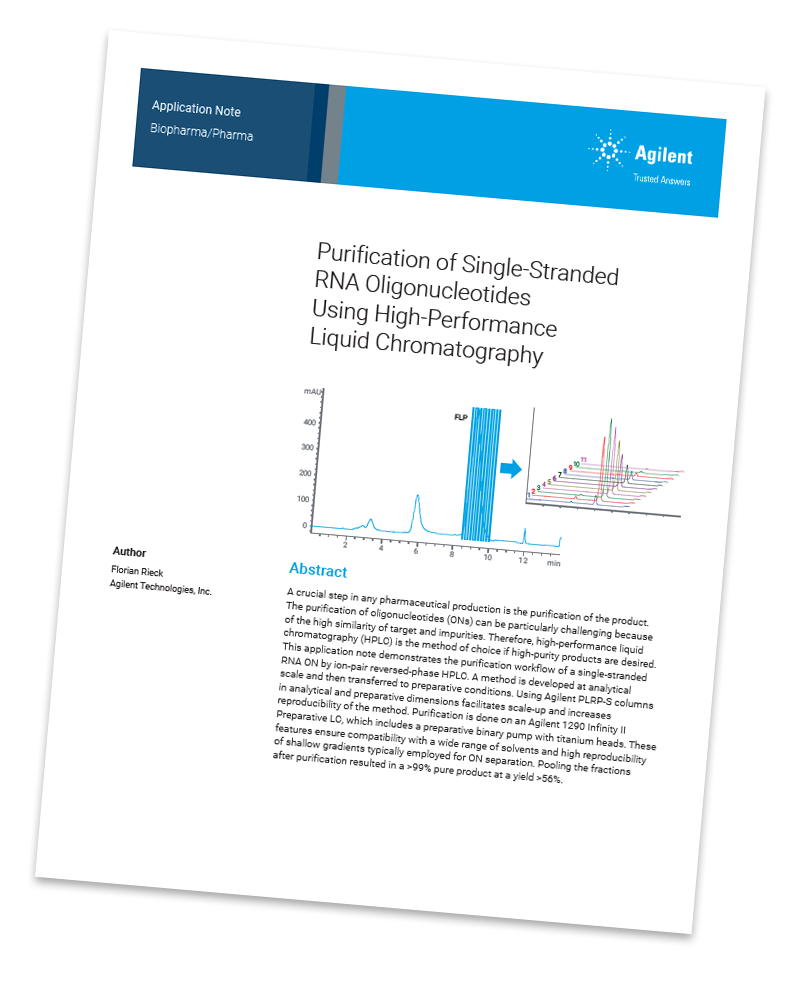In this application note purification of a single-stranded RNA oligonucleotide by ion pair reversed-phase HPLC is demonstrated, achieving > 99% pure fraction pool with a yield of > 56%.

 Abstract
Abstract
A crucial step in any pharmaceutical production is the purification of the product. The purification of oligonucleotides (ONs) can be particularly challenging because of the high similarity of target and impurities. Therefore, high-performance liquid chromatography (HPLC) is the method of choice if high-purity products are desired. This application note demonstrates the purification workflow of a single-stranded RNA ON by ion-pair reversed-phase HPLC.
Introduction
Synthetic ONs are a class of compounds that have gained increasing interest over the last few years because of their use in biochemical research and as pharmaceuticals. The process of synthesizing ONs has become much more efficient since its implementation in the 1980s. However, even with 99% coupling efficiency, a 25mer ON synthesis will yield less than 80% of the desired product.
An established separation method for ONs is reversed-phase HPLC. This technique employs separation columns with particles of 10 μm diameter or less, enabling high resolution of the analytes.
This application note demonstrates the separation and purification of a single-stranded RNA ON by preparative HPLC. The 1290 Infinity II Preparative LC System features a binary pump that is capable of precise gradient mixing even at high flow rates, which improves reproducibility and confidence in the results. Titanium pump heads are compatible with a wide pH range and salt concentration, stretching the range of applications that can be run on the instrument.
Experimental
For full details about instrumentation, columns, software, chemicals and sample please download the application note.
Results and Discussion
Analytical separation
The separation method was optimized on an analytical system using a sample concentration of 2 mg/mL. The optimized method was then scaled to preparative conditions using an HPLC method transfer calculator. As the mobile phase and column under preparative conditions were not amenable to temperature control, urea was added to the mobile phase to act as a chaotropic, or denaturing, agent.
Conclusion
This application note demonstrates the purification of a short single-stranded RNA oligonucleotide by means of ion-pair reversed-phase chromatography. Separation conditions were scaled up from analytical to preparative scale, using a 25 mm id column that enables high sample load. The Agilent 1290 Infinity II Preparative LC, comprising a combined autosampler/fraction collector, proved to be the ideal tool for large-scale injections and flexible fraction collection into tubes of various sizes. Collecting the target peak in time slices enabled specific pooling of the fractions by purity to meet workflow demands. Using this technique, a >99% pure fraction pool could be created with a yield of >56%.




